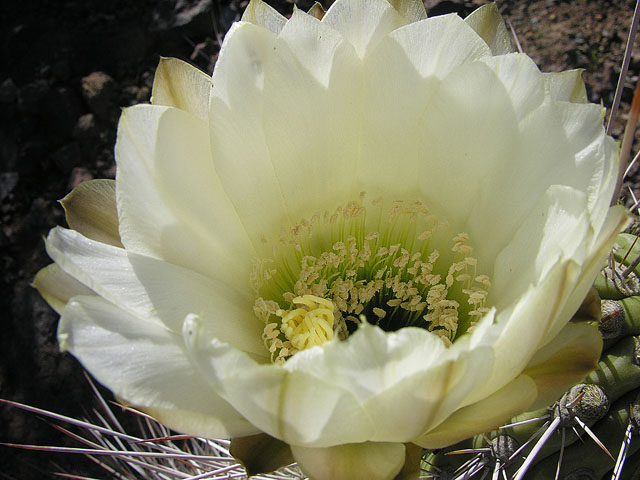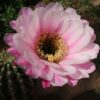
Trichocereus chiloensis, also known as Trichocereus chilensis or Echinopsis chiloensis, is a columnar cactus from Chile. It is closely related to Trichocereus terscheckii and something like the Chilean version of the large Andean Trichocereus species.
Current name:
Echinopsis chiloensis H.Friedrich & G.D.
Synonyms of T. chiloensis:
T. chilensis, T. chiloensis, Echinopsis chilensis, E. chiloensis, Cactus chiloensis, cereus chiloensis, Trichocereus skottsbergii, Trichocereus nigripilus, Echinopsis skottsbergii, Echinopsis nigripilus, Trichocereus spinibarbis. Trichocereus litoralis, Echinopsis litoralis, Trichocereus bolligerianus, Echinopsis bolligerianus
It´s debatable whether or not Trichocereus litoralis and Trichocereus coquimbanus are synonymous with Trichocereus chiloensis, but there is a clear connection and intermediates exist.
Some people consider Eulychnia eburnea to be synonymous with Tr. chiloensis / E. chiloensis, but I disagree vehemently. The plants look kinda similar, but the flowers of them are very different and clearly belong to the genus Eulychnia.
This Trichocereus species is the predominant Trichocereus in Chile. The Name “chiloensis” is the taxonomically correct one, but there´s a very high chance this was typo as the name was supposed to mean”Chilean Trichocereus” and not “Trichocereus from Chiloe”. T. chilensis doesn not grow anywhere near the island of Chiloe. This makes the confusion around the name even more ridiculous. I understand that Taxonomy has to prefer the earliest name recorded, but in this case, the name Trichocereus chilensis should be ignored because it is the taxonomic equivalent of a typo.
Trichocereus chilensis grows from the Provence Talca in the south of Chile down to the Elqui Valley in the Provence Coquimbo in the north. There are various varieties and the maximum size of the plants varies greatly. Trichocereus chiloensis is one of the most typical cacti in Chile, grows like a tree and can get up to 6-7 meters tall. It grows as strong columns that reach a maximum diameter of 15 centimeters. The areoles are white/beige and up to 2 centimeters long. It has 10-12 radial spines that are up to 2 centimeters large and 2-4 middle spines. The middle spines are usually between 5-10 centimeters long-
Flower: The flower of Trichocereus chilensis is a little smaller than the ones on other Trichocereus species. It is between 8-14 centimeters long. The tube has very little hair on it and is 4-6 centimeters long, white petals (up to 5 centimeters long). Trichocereus chiloensis is a diurnal species, but the flowers tend to stay open for a very long time, sometimes even up late into the night so you might get the idea it is actually night flowering. There are many varieties or intermediates of Trichocereus chilensis, which grow all around the habitats and in the area where different types grow in the neighborhood of each other.
Varieties or regional forms:
Trichocereus chiloensis var. eburneus
Trichocereus chiloensis pantholipes
Trichocereus chiloensis borealis
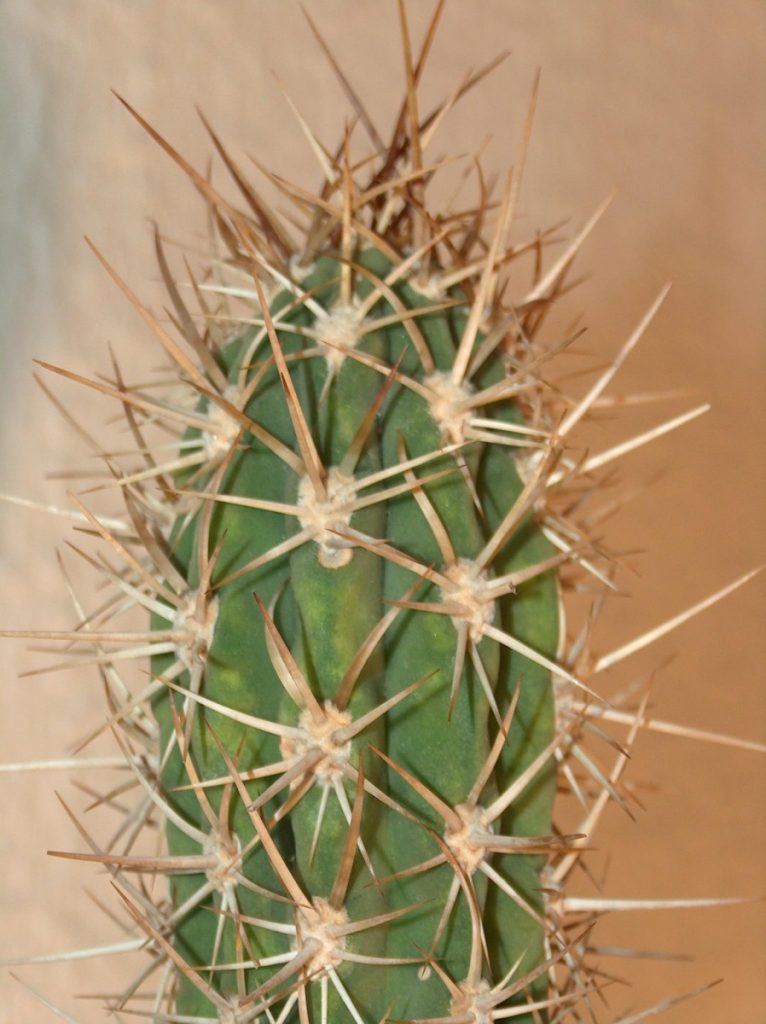
Trichocereus chiloensis var. australis
Trichocereus chiloensis var. conjungens
Trichocereus chiloensis var. skottsbergii


Pedro Lopez Artes
Trichocereus chiloensis var. litoralis


Pedro Lopez Artes
Cultivation of E. chiloensis:
Trichocereus chiloensis is a very tough cactus, just like many other cacti from Bolivian or Chilean deserts . They can take extreme heat and are very easy to grow. But they don’t like too much water, so you should never give too much water at once. They should only be watered in summer and require dry soil medium during the winter. Besides, they need a temperature change during the water in order to produce flowers. That means that you should overwinter Trichocereus chiloensis in a bright and well-ventilated room between October and April until there are no more night frosts. Trichocereus chiloensis is able to tolerate slight night frosts but the temperatures should not drop below -9° Celsius or you might lose the cactus. Apart from that, Trichocereus chiloensis is really easy and can thrive on very poor soil medium. I can recommend purely mineral soil mixes for them because they tend to rot when there is too much humus in the soil. A cactus that is kept in a mineral substrate can stay wet for much longer without any damage to the roots that one that is grown in a highly humus substrate.
Growing Trichocereus chiloensis from Seed: Trichocereus chiloensis is similarly easy from seed as any other Trichocereus. The seeds stay long for 5-10 years, though it´s best to use seeds that are not older than one year. The seeds need light to germinate and you usually sprinkle them on top of the soil and put the pot/sowing container in a room with a temperature between 25-30° Celsius for 2-6 weeks. If you still have no seedlings after 2-6 weeks, chances are that the seeds are not viable. There are not many suppliers for seed of Trichocereus chiloensis.
Right now I have a terrific strain of Trichocereus chilensis ssp. litoralis in my shop. Check it out here.
Trichocereus Chilensis – Huntington Botanical Garden by Richard Hipp
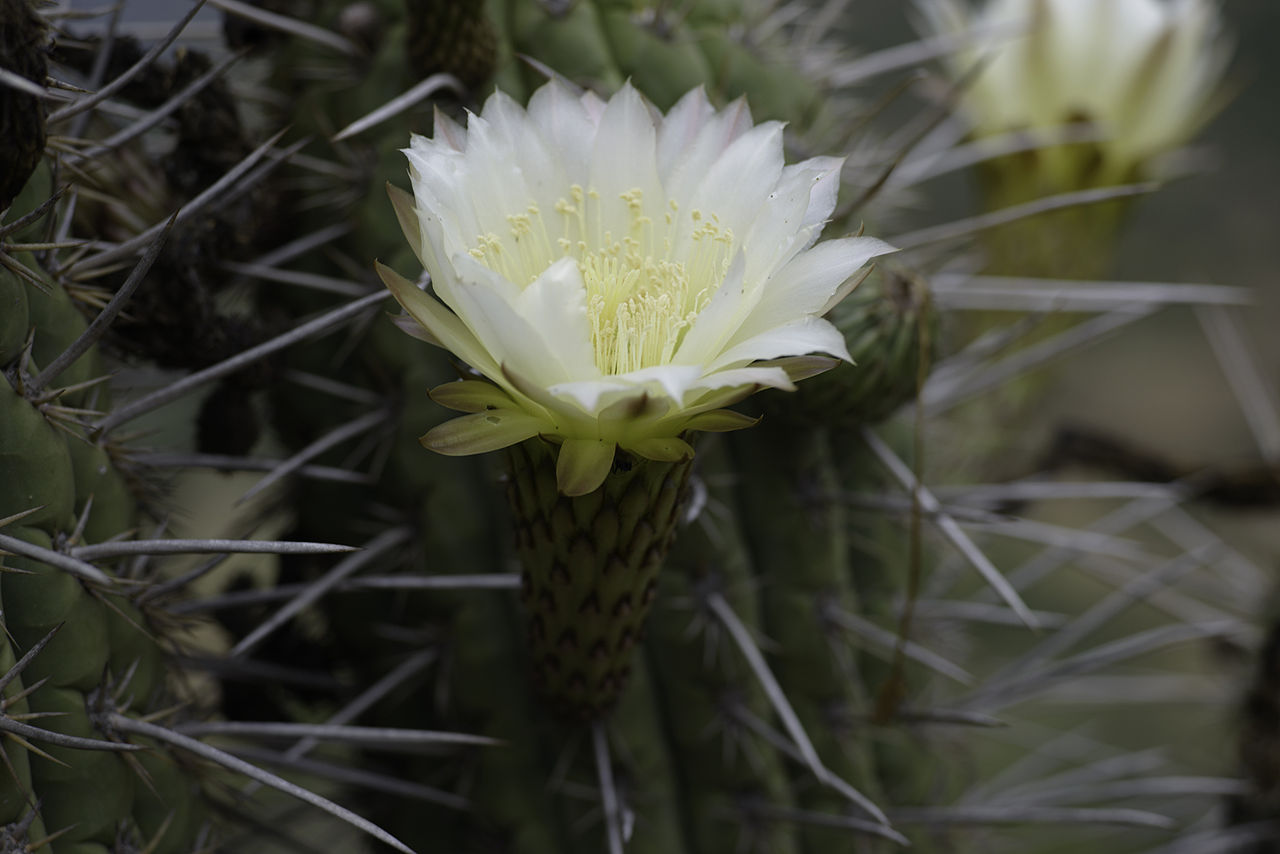
Jimmy Baikovicius -Echinopsis_chiloensis
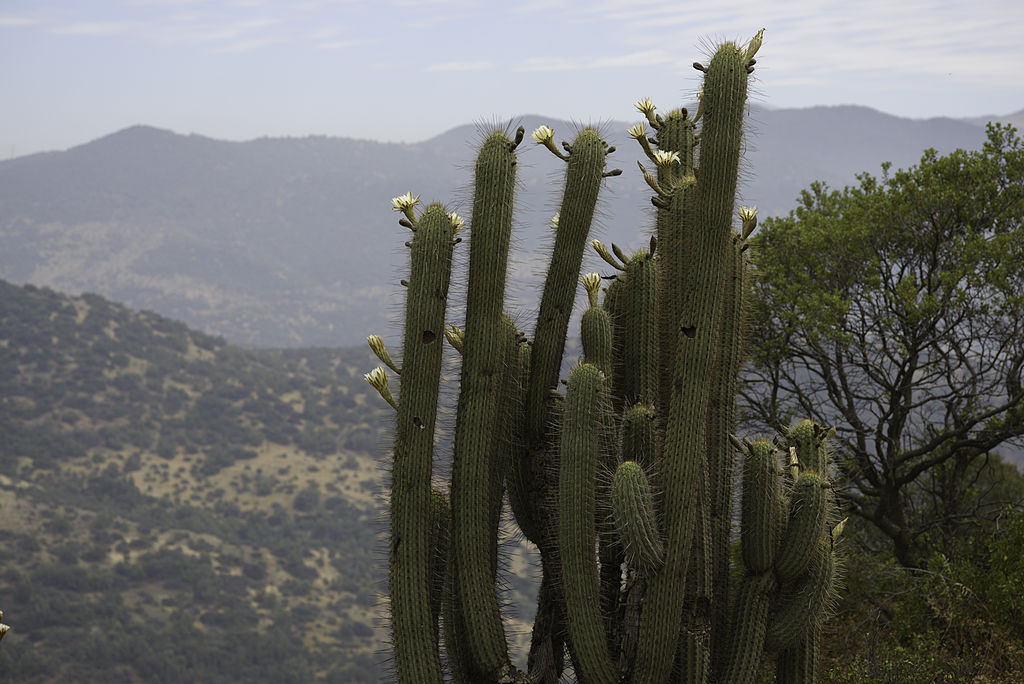
Jimmy Baikovicius Echinopsis_chiloensis
Echinopsis chilensis by penarc

scott zona Chusquea_cumingii_by_Scott_Zona
by jorge barrios Cactus Chile
by Stan Shebs
Stan Shebs Trichocereus_chiloensis

Stan shebs Trichocereus_chiloensis

milodon3 -Quisco
pato novia Leucostele_chiloensis_(littoralis)

Raffi Kojian Gardenology.org
Jason Hollinger Echiopsis_chiloensis

matthias ott Echinopsis_sp

Trichocereus chiloensis ssp. skottsbergii Pato_Novoa
milodon3 Echinopsis_Chiloensis


jason hollinger Echinopsis_chiloensisyazz Echinopsis_chiloensis_Yazz

by penarc Echinopsis_chiloensis_Colla

penarc Echinopsis_chiloensis

by daderot Echinopsis_chiloensis_-_Palmengarten_Frankfurt
daderot -Echinopsis_chiloensis_-_Botanical_Garden_in_Kaisaniemi,_Helsinki

dick culbert Echinopsis_chiloensis
dick culbert Echinopsis_chiloensis_


Photos below: Trichocereus chilonsis Anda Collo Braulio Gonzales


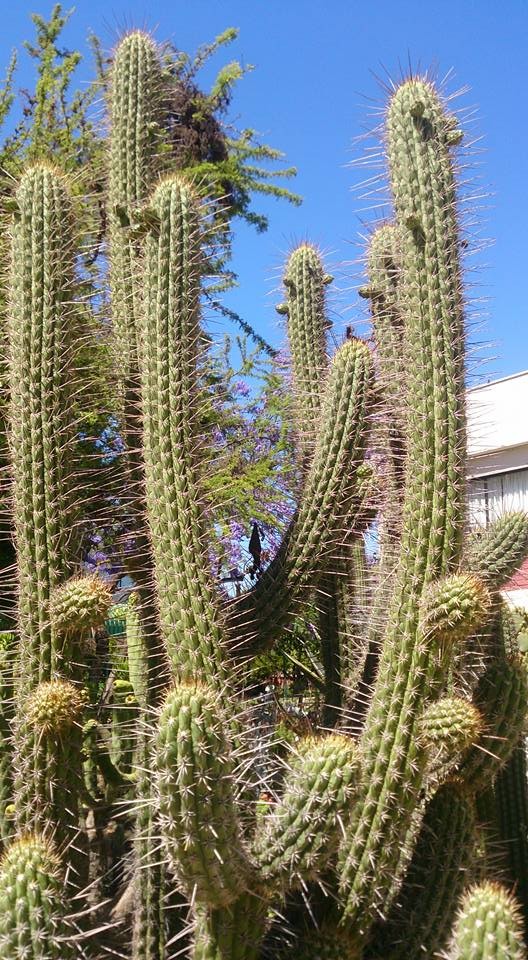
Trichocereus chiloensis_v. longispinus from the Fields Collection (Rodni Kisar)


T.chiloensis (Pedro Lopez Artes)

E. chilensis v.longispinus (Rodni and Delia Kisar)
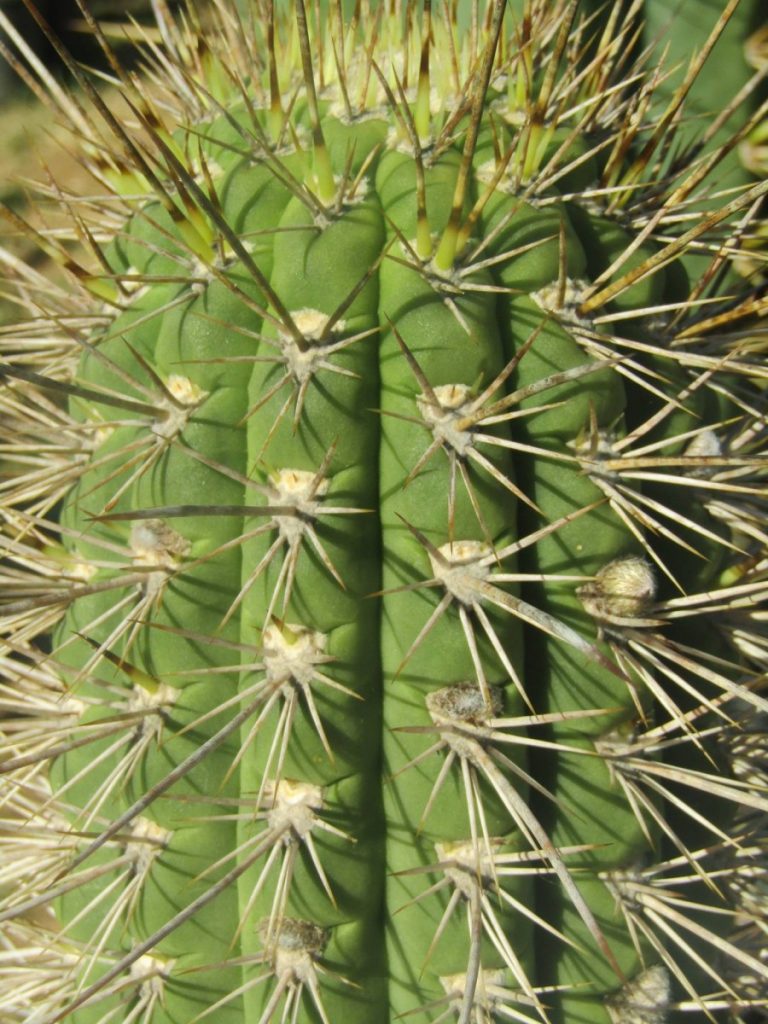

 Photo by Michelle Killen, culture plant in the United States
Photo by Michelle Killen, culture plant in the United States

Chilensis v. longispinus Delia Kisar


Photo by Michelle Killen

Pedro Lopez Artes 
 Photo: Jason Hollinger
Photo: Jason Hollinger 
If you want to see more photos of this species or enjoyed this free article, please join our Trichocereus Facebook group or Instagram.
Also check out our other articles in our Trichocereus species database.










